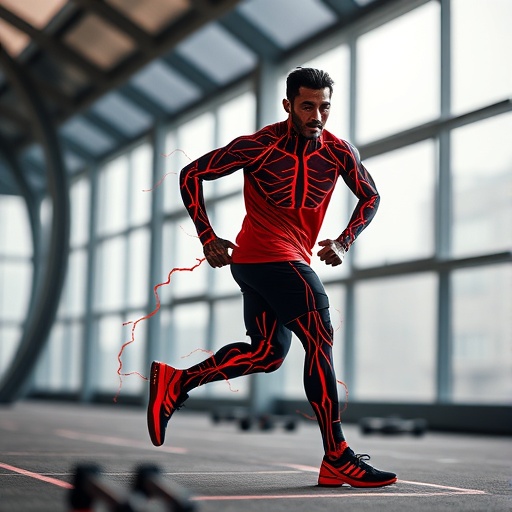The phenomenon of aging poses significant challenges to public health globally, particularly as age-related diseases intensify. Aging is intrinsically linked with a decline in physiological functions, a fact that contributes to an increasing burden on healthcare systems around the world. Vascular deterioration and an aging immune system elevate the risk of chronic diseases, thereby compromising the body’s ability to repair itself. In this context, recent studies have revealed promising insights into the physiological benefits of exercise, particularly with respect to the processes of angiogenesis and lymphangiogenesis as potential strategies to combat aging and associated diseases.
A groundbreaking review published in the Chinese Medical Journal sheds light on how exercise can stimulate these critical biological processes, which are integral to maintaining robust vascular and immune systems. The review, led by Dr. Junjie Xiao from the Cardiac Regeneration and Ageing Lab at the Institute of Geriatrics, Shanghai University, articulates a powerful viewpoint: exercise acts as a natural stimulus that promotes both angiogenesis—the formation of new blood vessels—and lymphangiogenesis—the development of lymphatic vessels. These processes are vital for enhancing blood flow and immune response, creating a multi-faceted approach to combatting age-related decline.
Angiogenesis is fundamentally crucial for maintaining optimal tissue oxygenation, nutrient transport, and effective wound healing. Concurrently, lymphangiogenesis holds significant importance for immune function and maintaining fluid balance within tissues. Aging adversely affects both blood and lymphatic vessels, which leads to reduced tissue perfusion, accumulation of metabolites, and compromised immune response. This cascade of effects accelerates the aging process and increases susceptibility to various diseases. Therefore, exercise can serve as an intervention to rejuvenate these systems, highlighting its role as a therapeutic tool in the fight against age-associated conditions.
Recent findings indicate that the mechanisms through which exercise fosters angiogenesis and lymphangiogenesis are varied and complex. Exercise is shown to upregulate vascular endothelial growth factor (VEGF) and its associated receptors, which are critical for endothelial cell proliferation and migration. This upregulation facilitates the formation of new capillaries, enhancing nutrient delivery to tissues. Furthermore, exercise triggers the activity of transcription factors such as hypoxia-inducible factor-1 alpha (HIF-1α), which orchestrates the body’s response to low oxygen levels and further promotes vascular growth. On the lymphatic side, exercise activates specific receptors such as VEGFR-3, promoting the remodeling necessary for effective lymphatic vessel development.
The benefits derived from exercise extend across various organ systems, each experiencing unique responses to induced angiogenesis and lymphangiogenesis. For the cardiovascular system, exercise supports the repair and regeneration of heart blood vessels, thereby improving myocardial blood perfusion and function. This enhancement is instrumental in reducing the risk of cardiovascular diseases that plague aging populations. Meanwhile, in skeletal muscles, increased blood supply from exercise-induced angiogenesis bolsters endurance and strength, significantly delaying the onset of muscle atrophy and functional decline linked with aging.
At the level of the brain, the influence of exercise is similarly profound. Exercise induces the remodeling of cerebral blood vessels, which in turn strengthens the overall integrity of neurovascular units. This reinforcement is associated with improved cognitive function and offers defenses against neurodegenerative disorders, presenting exercise not only as a preventive measure but also potentially a therapeutic one. Additionally, muscle activity can mitigate metabolic diseases, demonstrating exercise’s holistic benefits across various health dimensions.
Despite the compelling advantages of exercise-induced vascular adaptations, research in this arena still faces considerable challenges. One unresolved issue is whether molecular signaling pathways related to angiogenesis and lymphangiogenesis operate in concert across different organ systems. Additionally, the effects of varying exercise types, intensities, and durations on these processes remain poorly characterized. Individual differences in response to exercise warrant further exploration, as do the potential adverse effects of excessive exercise, especially among elderly individuals or those with existing health challenges.
Moreover, integrating exercise interventions with existing medical treatments raises further questions regarding best practices for optimizing health outcomes. Dr. Xiao highlights these pressing issues, asserting that while the advantages of exercise-induced growth in vascular and lymphatic systems are evident, much work lies ahead in personalizing exercise protocols and harmonizing them with pharmacological approaches. The review emphasizes ongoing research aimed at refining these strategies, as the relationship between exercise, vascular health, and aging unfolds.
In summary, the emerging body of evidence points to the powerful influence of exercise on enhancing angiogenesis and lymphangiogenesis, offering a compelling narrative for its role in combating aging and disease. However, translating these findings into clinical applications necessitates extensive research to verify and optimize exercise protocols for individualized health interventions. Future studies must pinpoint the precise molecular mechanisms behind exercise’s effects, assess the best exercise regimens for various demographics, and evaluate sustained health impacts over time.
As the world grapples with the realities of an aging population, developing tailored exercise programs could significantly enhance the quality of life for older adults. The ultimate goal of such research is to equip healthcare providers and individuals with effective, safe, and personalized exercise strategies that bolster both healthspan and lifespan. This trajectory hints at a future where aging is not merely endured but actively resisted through the art and science of physical exercise.
Subject of Research: Cells
Article Title: Exercise-induced angiogenesis and lymphangiogenesis: A potential therapeutic tool to fight aging and disease
News Publication Date: 20-Oct-2025
Web References:
References: DOI: 10.1097/CM9.0000000000003831
Image Credits: Dr. Junjie Xiao from the Cardiac Regeneration and Ageing Lab, Institute of Geriatrics, School of Medicine, Shanghai University, China




